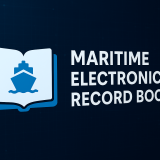There is still no indication when operations at a container terminal in the world’s largest port will resume following a single Covid outbreak earlier this week.
The Ningbo Meishan Island Container Terminal, also known as Meishan terminal, suspended operations at 3:30 am local time on Wednesday after a double jabbed, 34-year-old worker came down with the delta variant of Covid-19.
Ningbo, lying to the south of Shanghai, is by some distance the world’s largest port in overall tonnage terms, and ranks third in the world for container throughput with Meishan accounting for roughly one fifth of the approximate 30m teu throughput of the port.
Expect to add another day onto your dwell time for every day Ningbo Meishan terminal is closed
Since Wednesday, the authorities have identified more than 4,000 port staff to go through further Covid tests. There has been no official announcement of any further positive cases being detected.
“This closure has continued … and has the possibility of being closed for up to 14 days,” UK-headquartered logistics outfit World Transport Agency (WTA) warned in an update on the ramifications for global supply chains in the wake of the terminal closure.
There is now more than 200,000 teu worth of boxships anchored off Ningbo, according to Splash estimates. The giant port was already experiencing some of the worst congestion in the world before the Covid case struck thanks to new Covid operating procedures and a recent typhoon.
“While other terminals remain open, they are facing heavy congestion. With a current waiting time of 2-3 days, this time is likely to increase further as carriers change route away from Ningbo Port,” WTA predicted.
Nerijus Poskus, vice president of global ocean at logistics platform Flexport, commented: “We don’t know how long this closure will last, but with average wait times currently at two to four days, expect to add another day onto your dwell time for every day Ningbo Meishan terminal is closed. For any cargo already going through that terminal, it’s not a question of if it will be impacted but for how long.”
Poskus’s advice for urgent cargo that isn’t already at Ningbo is for shippers to arrange trucking as long as a special RNA test is not required for drivers to Shanghai and then pay for premium ocean services from there.
Lars Jensen, CEO of Danish liner consultancy Vespucci Maritime, told Splash the Ningbo outage could cause operational disruptions larger than those already experienced in 2021.
“It will not only impact export cargo from the specific terminal but will add pressure on both Ningbo and Shanghai ports, worsen equipment shortages in East China and cause added ripples for reefer slot shortage at terminals in the region and when re-opened it could cause another wave of cargo surge at destinations in North America and Europe,” Jensen warned.




